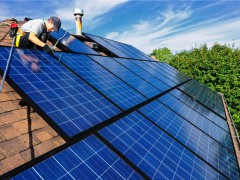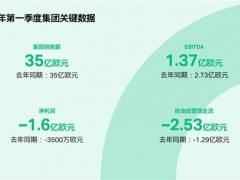據(jù)美國(guó)鉆井網(wǎng)站2021年5月19日?qǐng)?bào)道,挪威著名能源研究和商業(yè)情報(bào)公司雷斯塔能源公司(Rystad)稱,英國(guó)石油公司(BP)和法國(guó)道達(dá)爾公司日前先后宣布了他們到2030年最大的可再生能源目標(biāo),并強(qiáng)調(diào)兩家公司的目標(biāo)是50吉瓦的產(chǎn)能。
這個(gè)產(chǎn)能是同期其他石油巨頭的兩倍多,埃尼公司、殼牌公司、Equinor和雷普索爾公司的可再生能源產(chǎn)能目標(biāo)都在20吉瓦以下,葡萄牙最大能源企業(yè)Galp的目標(biāo)是10吉瓦,雪佛龍公司的目標(biāo)遠(yuǎn)低于5吉瓦。
Rystad可再生能源副總裁Vegard Wiik Vollset說:“如果我們把英國(guó)石油公司和道達(dá)爾公司2030年前50吉瓦的目標(biāo)看成是他們可再生能源投資基準(zhǔn),這兩家公司在可再生能源達(dá)到他們目標(biāo)前將不得不每年向新項(xiàng)目花費(fèi)大約50億到60億美元。”
Vollset強(qiáng)調(diào)說,相比之下,英國(guó)石油公司到2030年在油氣項(xiàng)目上的計(jì)劃資本支出(CAPEX)為每年80億美元,道達(dá)爾公司到2030年在油氣項(xiàng)目上的計(jì)劃資本支出約為每年100億美元。
根據(jù)上面的數(shù)據(jù),平均起來,英國(guó)石油公司的年度石油和天然氣支出將在37.5%,比其到2030年年度可再生能源支出高出25%,而道達(dá)爾公司的年度石油和天然氣支出將在50%,比其到2030年年度可再生能源支出高出40%。
展望2050年,Vollset概述了一個(gè)遠(yuǎn)離化石燃料的巨大轉(zhuǎn)變。Rystad的代表告訴美國(guó)鉆井網(wǎng)站,即使將油氣的中游和下游部分包括在內(nèi),到2050年可再生能源的總投資預(yù)計(jì)將是油氣的10倍。Vollset強(qiáng)調(diào),2020年全球在石油和天然氣項(xiàng)目上的支出超過了可再生項(xiàng)目。
Vollset說:“至于石油巨頭到2050年前將采取什么行動(dòng),我認(rèn)為這取決于個(gè)別公司,你可以看到它們之間迥然不同的做法。”
Vollset補(bǔ)充說:“雖然歐洲石油巨頭已經(jīng)在可再生能源領(lǐng)域進(jìn)行了戰(zhàn)略轉(zhuǎn)移,但美國(guó)石油巨頭尚未在可再生能源領(lǐng)域進(jìn)行任何實(shí)質(zhì)性投資。”
惠譽(yù)解決方案公司資深油氣分析師Emma Richards指出,由于資本支出預(yù)測(cè)往往是短期的,石油巨頭2050年的潛在投資比例將會(huì)是怎樣的,這很難衡量。
Richards告訴美國(guó)鉆井網(wǎng)站:“凈零目標(biāo)可以提供一個(gè)指導(dǎo),但就可再生能源與石油和天然氣的支出而言,這意味著將取決于一系列因素,尤其是碳捕獲技術(shù)的部署和碳抵消的使用。”
Richards補(bǔ)充道:“總的來說,這一比例目前非常低,但對(duì)于那些從大型石油公司向大型能源公司轉(zhuǎn)型的大型企業(yè)來說,到2050年前,清潔能源可能會(huì)占據(jù)資本支出的最大份額。”
這位惠譽(yù)解決方案的分析師接著指出,美國(guó)石油巨頭在其投資組合中保留的石油和天然氣比重看來將高于歐洲同行。
李峻 編譯自 美國(guó)鉆井網(wǎng)站
原文如下:
The Renewables vs Oil Spend of Majors
BP and Total have the biggest announced renewables targets to 2030 among the oil and gas majors, according to Rystad Energy, which highlights that the companies are aiming for 50 gigawatts (GW) of capacity.
This is more than double that of any other major during the same period, with Eni, Shell, Equinor, and Repsol all targeting under 20 GW of renewables capacity, Galp aiming for 10 GW and Chevron aiming for well under five GW, Rystad outlines.
If we take BP and Total’s 50 GW target by 2030 as their renewables investment benchmark, the companies will have to spend roughly $5 billion to $6 billion per year on new projects within renewables to reach their targets, according to Vegard Wiik Vollset, Rystad Energy’s vice president of renewable energy.
In comparison, Vollset highlighted that BP’s planned capital expenditure (CAPEX) on oil and gas projects to 2030 is $8 billion per year and Total’s planned CAPEX on oil and gas projects to 2030 is around $10 billion per year. Going by the figures above, on average, BP’s annual oil and gas spend would be around 37.5 percent to 25 percent higher than its annual renewables spend to 2030 and Total’s annual oil and gas spend would be around 50 percent to 40 percent higher than its annual renewables investment during the same period.
Looking further ahead to 2050, Vollset outlined a drastic shift away from fossil fuels. The Rystad Energy representative told Rigzone that total investment in renewable energy in 2050 is expected to be ten times that of oil and gas, even if the midstream and downstream part of oil and gas is included. Vollset highlighted that, in 2020, the world spent more on oil and gas projects than on renewable projects.
“With regards to what the oil majors will be doing by then [2050], I think it depends on the individual company, as you see drastically different approaches between them,” Vollset said.
“Whereas the European majors have already made strategic shifts into renewables, the U.S. majors have yet to make any material investments within renewables energy,” Vollset added.
Commenting on what the potential percentage breakdown of investment among the majors may look like to 2050, Emma Richards, a senior oil and gas analyst at Fitch Solutions, noted that it would be hard to gauge as CAPEX projections tend to be short run.
“Net zero ambitions can offer a guide, but what this means in terms of spending on renewables versus oil and gas will depend on a host of factors, not least the deployment of carbon capture technologies and the use of carbon offsets,” Richards told Rigzone.
“In general, the percentage share is currently extremely low but, for those majors transitioning from big oil to big energy, clean energies will likely take the lion’s share of CAPEX by 2050,” Richards added.
The Fitch Solutions analyst went on to note that U.S. majors look set to retain oil and gas as a larger share of their portfolios than their European counterparts.
免責(zé)聲明:本網(wǎng)轉(zhuǎn)載自其它媒體的文章,目的在于弘揚(yáng)石化精神,傳遞更多石化信息,并不代表本網(wǎng)贊同其觀點(diǎn)和對(duì)其真實(shí)性負(fù)責(zé),在此我們謹(jǐn)向原作者和原媒體致以敬意。如果您認(rèn)為本站文章侵犯了您的版權(quán),請(qǐng)與我們聯(lián)系,我們將第一時(shí)間刪除。







